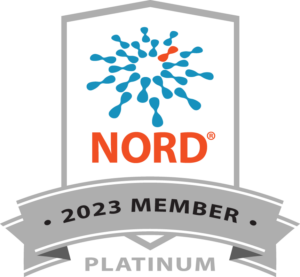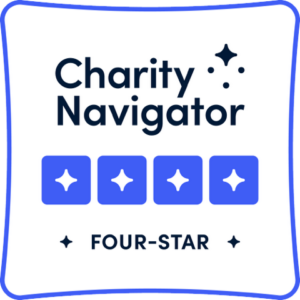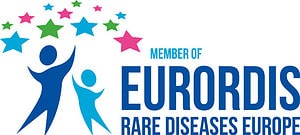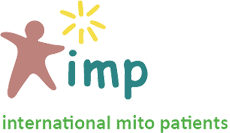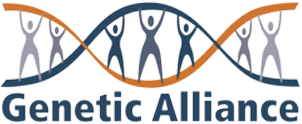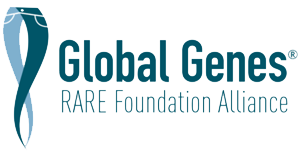General Info for POLG-Related Disorders
Overview
POLG-related disorders are a group of rare genetic conditions that affect the mitochondria. Mitochondria are the parts of a cell that help turn the energy we get from food into energy that the body can use. They are also important in the communication between body parts and creating other materials the body needs. Mitochondrial conditions can cause a variety of signs and symptoms in many parts of the body, particularly those that use a lot of energy like muscles and the brain. The gene POLG provides instructions to make part of an important protein called polymerase gamma (pol gamma). Pol gamma is the only protein of its kind that can copy and repair the set of DNA found in mitochondria (mtDNA).
POLG-related disorders are a group of conditions whose signs and symptoms can overlap and vary widely. These conditions were discovered and named before scientists knew they were caused by different changes in the same gene. POLG-related disorders are sometimes discussed together as a group, and are sometimes discussed as individual disorders. Imagine POLG Mutations/Related disorders as a large umbrella, and underneath that umbrella there are specific types of POLG-related conditions. These types include: Alpers-Huttenlocher syndrome (Alpers syndrome, or AHS), ataxia neuropathy spectrum (ANS), childhood myocerebrohepatopathy spectrum (MCHS), mitochondrial neurogastrointestinal encephalopathy disease (MNGIE), myoclonic epilepsy myopathy sensory ataxia (MEMSA), progressive external ophthalmoplegia (PEO), and Leigh syndrome.
Related Conditions
- Alpers-Huttenlocher syndrome (Alpers syndrome, or AHS);
- ataxia neuropathy spectrum (ANS);
- childhood myocerebrohepatopathy spectrum (MCHS);
- mitochondrial neurogastrointestinal encephalopathy disease (MNGIE);
- myoclonic epilepsy myopathy sensory ataxia (MEMSA);
- progressive external ophthalmoplegia (PEO);
- Leigh syndrome.
Genetics
Affected Genes
POLG
Inheritance Type(s)
- Autosomal dominant
- Autosomal recessive
- De Novo
Cause and Genetics
POLG-related disorders are inherited genetic conditions, meaning they are passed down in a family. People usually have two copies of the POLG gene, one inherited from each parent.
Most types of POLG-related disorders occur when there are changes in both copies of the POLG gene (autosomal recessive inheritance). Someone who has a change in only one copy of the POLG gene is called a carrier, and they usually do not have any medical symptoms. If both parents are carriers, there is a 1 in 4 chance with each pregnancy that their child will have a POLG-related disorder.
Changes in POLG can also cause an autosomal dominant type of progressive external ophthalmoplegia (PEO) called adPEO. This happens when someone has specific changes in one copy of their POLG gene. If a parent has a change that causes adPEO in one copy of their POLG gene, there is a 1 in 2, or 50% chance with each pregnancy that their child would also have the same change in POLG.
Both males and females can have POLG-related disorders.
Frequency
Frequency (Global)
The frequency of POLG-related disorders is different for each condition. Some forms of POLG-related disorders are also more common in certain ethnic groups or countries. Overall, it is thought that 1 in 100 people in the “western world” have a change in one copy of their POLG gene that can cause a POLG-related condition (carriers for a POLG-related condition).
Affected Biological Gender
Both Male and Female
Signs and Symptoms of POLG-Related Disorders
POLG-related disorders cause a range of signs and symptoms. These may differ greatly, even among members of the same family, so always check with your provider if new symptoms appear or you are concerned.
Depending on the type of POLG-related condition someone has, people can begin to show signs and symptoms of POLG-related disorders as a baby or late into adulthood. The signs and symptoms also vary widely based on the individual disorder someone has. Some of the signs and symptoms of POLG-related disorders can include:
- Severely low, or low muscle tone (hypotonia)
- Developmental delay
- Signs of liver conditions such as low blood sugar (hypoglycemia)
- Kidney disease
- Cataracts
- Seizures
- Progressive and/or general muscle weakness (myopathy)
- Weakness and difficulty moving parts of the eye (Progressive external ophthalmoplegia)
- Movement differences including difficulty controlling movements or abnormal muscle movements (ataxia, parkinsonism)
- Hearing loss
- Premature Ovarian Failure and/or premature menopause
- Tingling, pain or loss of feeling in nerves (neuropathy)
- Mental health conditions (like depression)
This is not an exhaustive list of signs and symptoms that can occur with POLG-related conditions. POLG related symptoms can be very different depending on where your mutation is located. More information about signs and symptoms that may occur in individual conditions under the POLG-related disorder umbrella can be found on their respective factsheets: *insert links to pages for Alpers-Huttenlocher syndrome (Alpers syndrome, or AHS), ataxia neuropathy spectrum (ANS), childhood myocerebrohepatopathy spectrum (MCHS), mitochondrial neurogastrointestinal encephalopathy disease (MNGIE), myoclonic epilepsy myopathy sensory ataxia (MEMSA), progressive external ophthalmoplegia (PEO), and Leigh syndrome.
Diagnosis
A diagnosis of a POLG-related condition is usually established by performing a genetic test to look for changes in the gene POLG. Depending on the type of POLG-related disorder suspected, a doctor may suggest many different types of examinations and tests such as:
- EEG to evaluate seizures
- Brain imaging
- Biomarkers in blood and urine
- Muscle biopsy
- Enzyme assays (respiratory chain enzyme, or RCE)
- Genetic tests to look for changes in POLG or other genes
More information about the diagnosis of individual conditions under the POLG-related disorder umbrella can be found on their respective factsheets: *insert links to pages for Alpers-Huttenlocher syndrome (Alpers syndrome, or AHS), ataxia neuropathy spectrum (ANS), childhood myocerebrohepatopathy spectrum (MCHS), mitochondrial neurogastrointestinal encephalopathy disease (MNGIE), myoclonic epilepsy myopathy sensory ataxia (MEMSA), progressive external ophthalmoplegia (PEO), and Leigh syndrome.
POLG-related disorders are not included on newborn screening panels. If there is a known family history of a POLG-related disorder, or if a mother is a known carrier, prenatal testing can be performed on amniotic fluid (the fluid surrounding a baby) or chorionic villi (a specific part of the placenta). Results interpretation of this testing is complicated and genetic counseling is recommended.
Newborn Screening: Recommended Uniform Screening Panel (RUSP)
No
Treatment of POLG-Related Disorders
Treatment and Management
Before beginning any treatment or therapy, please consult with your physician.
There is currently no FDA-approved therapy for any POLG-related disorder. Treatment and management of POLG-related disorders are symptomatic and supportive. Individuals living with a POLG-related disorder typically work with several healthcare providers regularly based on their symptoms. Treatments may include:
- Typical treatment of seizures
- Supportive therapies based on symptoms
- Cataract removal
- Liver transplantation
- Avoidance of mitochondrial toxins like certain drugs, tobacco and alcohol
- Mitochondrial supplements
- Special schooling arrangements depending on age of onset
It is important that all those living with or caring for someone with a POLG-related condition have an emergency protocol letter. These letters, which are written and signed by a doctor, share details about prescribed treatment during a crisis and in emergency room settings.
Resources
- The POLG Foundation
- POLG-related disorders and their neurological manifestations: Journal Article
- Mitochondrial DNA Replication Group: NIH lab who focuses on understanding POLG Mutations
Connecting with others impacted by a rare disease allows for vital information to be shared about day-to-day life, prevents isolation, and gives hope. Please contact MitoAction for peer support opportunities at 888-MITO-411 or email mito411@mitoaction.org.
Other resources we recommend are:
MitoAction does not provide medical advice, diagnosis, treatment, or legal advice. It is essential that all those living with or caring for someone with a Mitochondrial or FAOD disease have an emergency protocol letter. These letters, which are written and signed by a doctor, share details about prescribed treatment during crises and in emergency room settings. Always check with your doctor if you or your child has concerns as everyone may present with symptoms differently. Before beginning any treatment or therapy, please consult with your physician.
Sources:
- POLG-Related Disorders – GeneReviews® – NCBI Bookshelf
- Progressive external ophthalmoplegia: MedlinePlus Genetics
- POLG Foundation
- Pathogenicity in POLG syndromes: DNA polymerase gamma pathogenicity prediction server and database – PMC
- POLG-related disorders and their neurological manifestations – PMC
Last Updated: 07/05/2024



